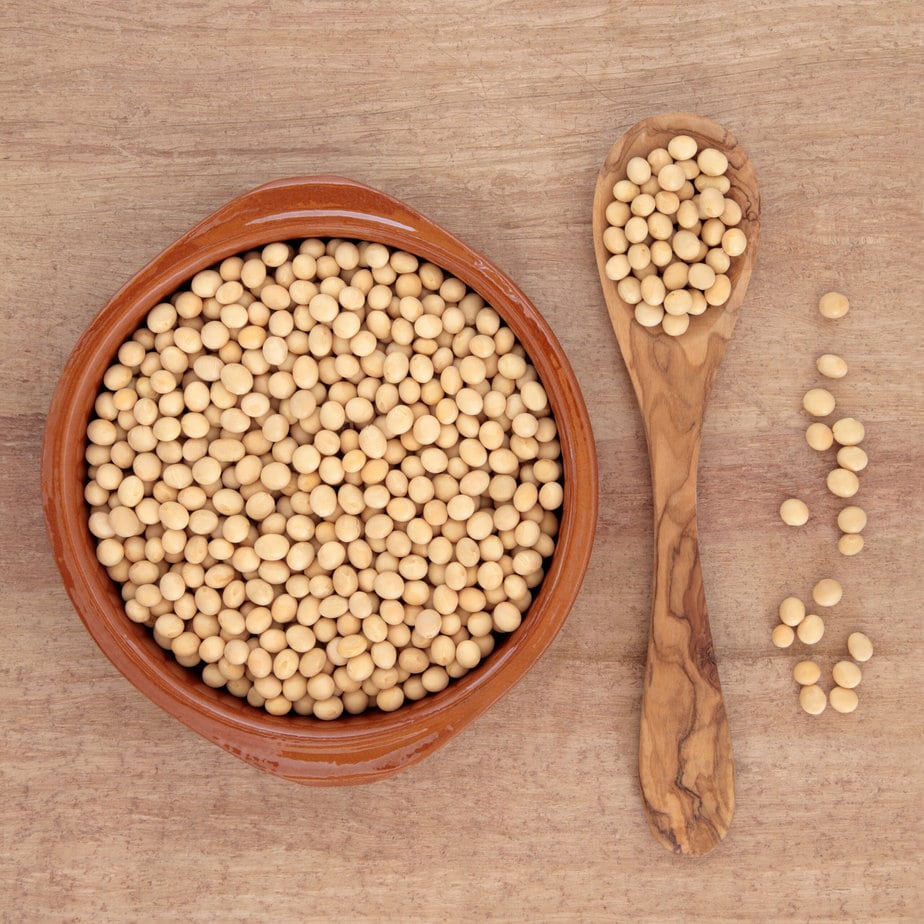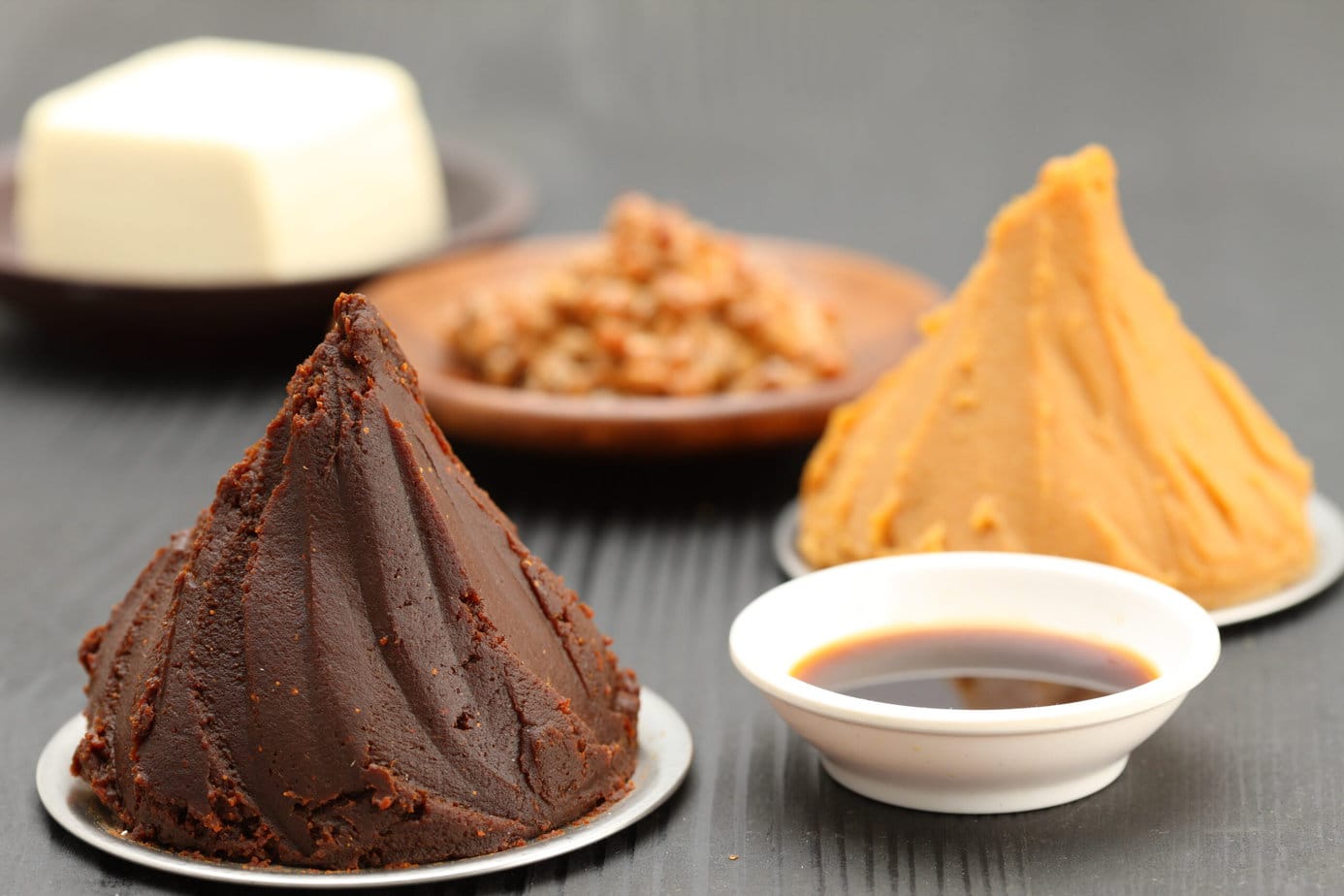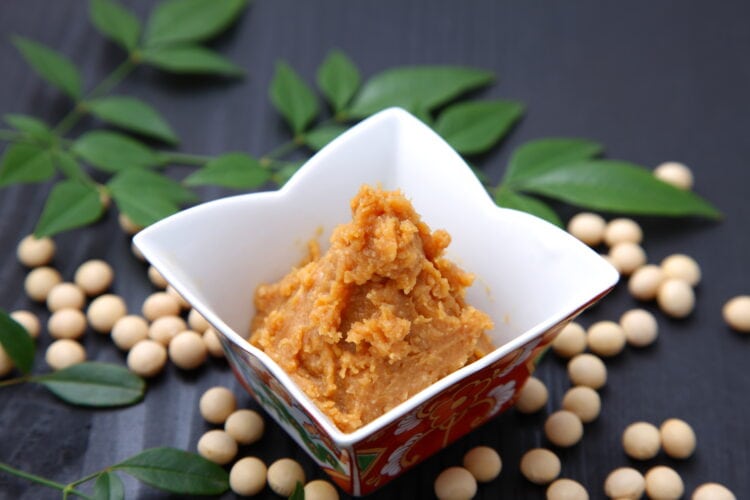Miso – most of us have heard of it at least once in our lives… and with good reason! This traditional staple of Chinese cuisine and Japanese cuisine has now found a firm foothold in Europe, where chefs prize its uniquely distinctive flavour.
What is miso?
Miso is a fermented paste of Asian origin. It is made from soybeans, rice, or wheat mixed with salt and a fungus called “koji”.

The mixture is then left to ferment for several months, sometimes even years, which gives miso its texture and its powerful umami taste. It is used in countless recipes, most notably the famous miso soup, both in Asia and, increasingly, in Europe.
Origin of miso
Like many Asian products, the exact origins of miso are uncertain. It is thought to have been created about 2,000 years ago in China before being introduced to Japan, where it became indispensable.
The word “miso” is Japanese. In China it was originally known as “chiang”, but today the Japanese term is universally used.
Over time, the way miso is made has evolved and been enriched through culinary exchanges between countries. Today there are many varieties, each defined by its own ingredients and flavour profile.
Miso varieties explained
Different types of miso mean different flavours to explore – that is the real appeal of this ingredient. Each variety uses a specific grain, ferments for a set time, and contains its own level of salt, so it helps to know how to tell them apart. The most common are white, red, and black miso.

White miso
White miso, or “shiromiso”, is made from rice and soybeans. Because it ferments for a shorter time, it is milder and creamier. It is usually recommended for first-timers and is the most popular variety in Tokyo. It is also one of the sweetest varieties.

Red miso
Red miso, or “akamiso”, is made from soybeans and barley or rice. Because it ferments longer, it develops a stronger, saltier flavour.
Black miso
“Kiromiso”, or black miso, ferments much longer than the others, which gives it a bolder taste and higher salt content.
Many other varieties exist, such as sweet soybean miso or buckwheat miso. The latter is darker and also ferments for a very long time. Both it and rice miso have particularly strong flavours.

Taste of miso
The flavour of miso depends on the type you use. In general, miso is salty, sometimes slightly sweet, and defined by its umami flavour.
White miso is slightly sweeter than the others. It is mild and rounded on the palate and has a creamy texture.
The most “robust” misos are red, black, and buckwheat miso. They have stronger flavours and are trickier to master. If you prefer something subtler, choose soybean or rice miso.
Still, I recommend trying them all so you can decide which suits your dish best; bear in mind that flavour can vary from one producer to another.
Health benefits of miso
In Asia, miso is prized for its many health benefits. Because it is usually eaten in small amounts, its calorie load is modest. It is rich in protein and antioxidants, making it a valuable ally for vegetarians and vegans.
Miso is also a good source of probiotics, which can support immunity and digestion. The soy it contains may help regulate blood pressure and protect against certain heart diseases. However, moderation is key; miso can be high in salt, so enjoy it sparingly.
How is miso prepared?
Making miso is no simple task. Each component plays a specific role. The traditional recipe mixes sprouted grains, koji (the fermentation agent), salt, sugar, and dried bonito.
Next comes fermentation. The mixture is packed into cloth bags or earthenware jars and left to ferment for several months, sometimes years, depending on the type of miso being made.
Once fermentation is complete, the mixture is pressed to remove excess liquid, leaving only a solid paste.
For sale, miso is often packed in metal cans for longer shelf life, though some producers still use cloth bags or earthenware pots. Methods vary from region to region, and family businesses often follow unique recipes.
How to use miso?
Miso’s uses depend on both the dish and your taste. It is perfect in soups – the classic miso soup recipe proves it. It also works well in sauces, noodle dishes, and as a marinade for meat or vegetables… Yet it is worth noting that certain ingredients pair better with particular kinds of miso.

White miso, for instance, pairs beautifully with mildly flavoured vegetables such as carrots, daikon, or mushrooms. It is also excellent for marinating fish or tofu.
By contrast, red miso complements robust vegetables like broccoli or cabbage and is ideal for marinating chicken or beef, adding extra punch. If you want even deeper complexity, reach for black miso – it can elevate almost any dish. Plenty of room to get creative!
How to substitute miso?
No miso on hand? Tamari sauce or soy sauce are good stand-ins. Their flavour is similar and they can be used in the same way: in soups, sauces, or marinades… Worcestershire sauce can also do the job.
If none of these are available, use vegetable stock. You will lose some umami, but the stock will still season your soups.
Where to find miso?
Miso is easy to find these days. Asian grocery stores and many supermarkets carry it. For a more authentic product, look in specialist shops, where you will also find a wider selection and knowledgeable advice.
How to store miso?
Like most pastes, miso will keep in an airtight container in the refrigerator for about 6 months to 1 year. It may harden over time; don’t panic. Do not throw it away – just soften it by placing the container in warm water. You can also freeze miso, and it will last just as long.

